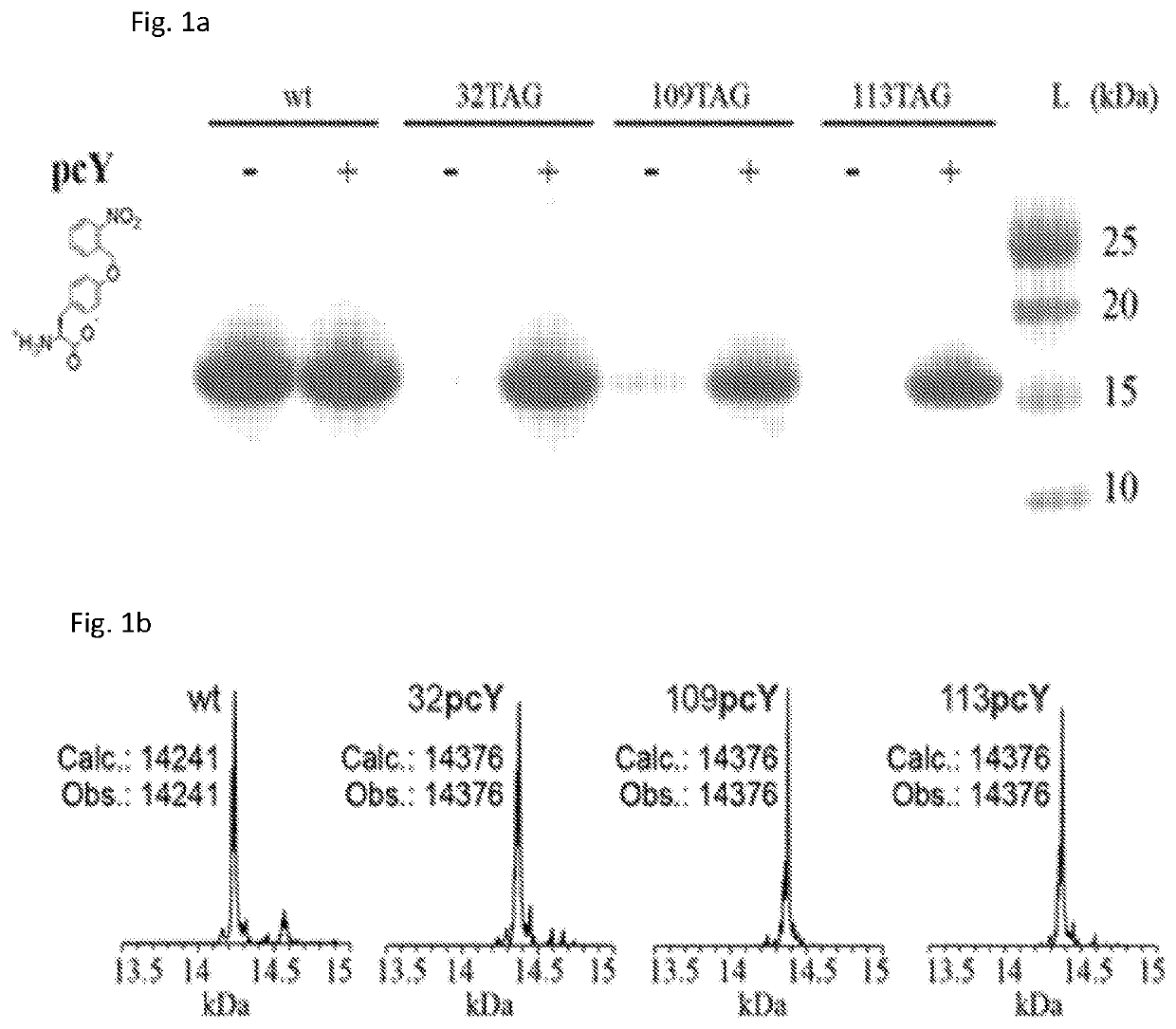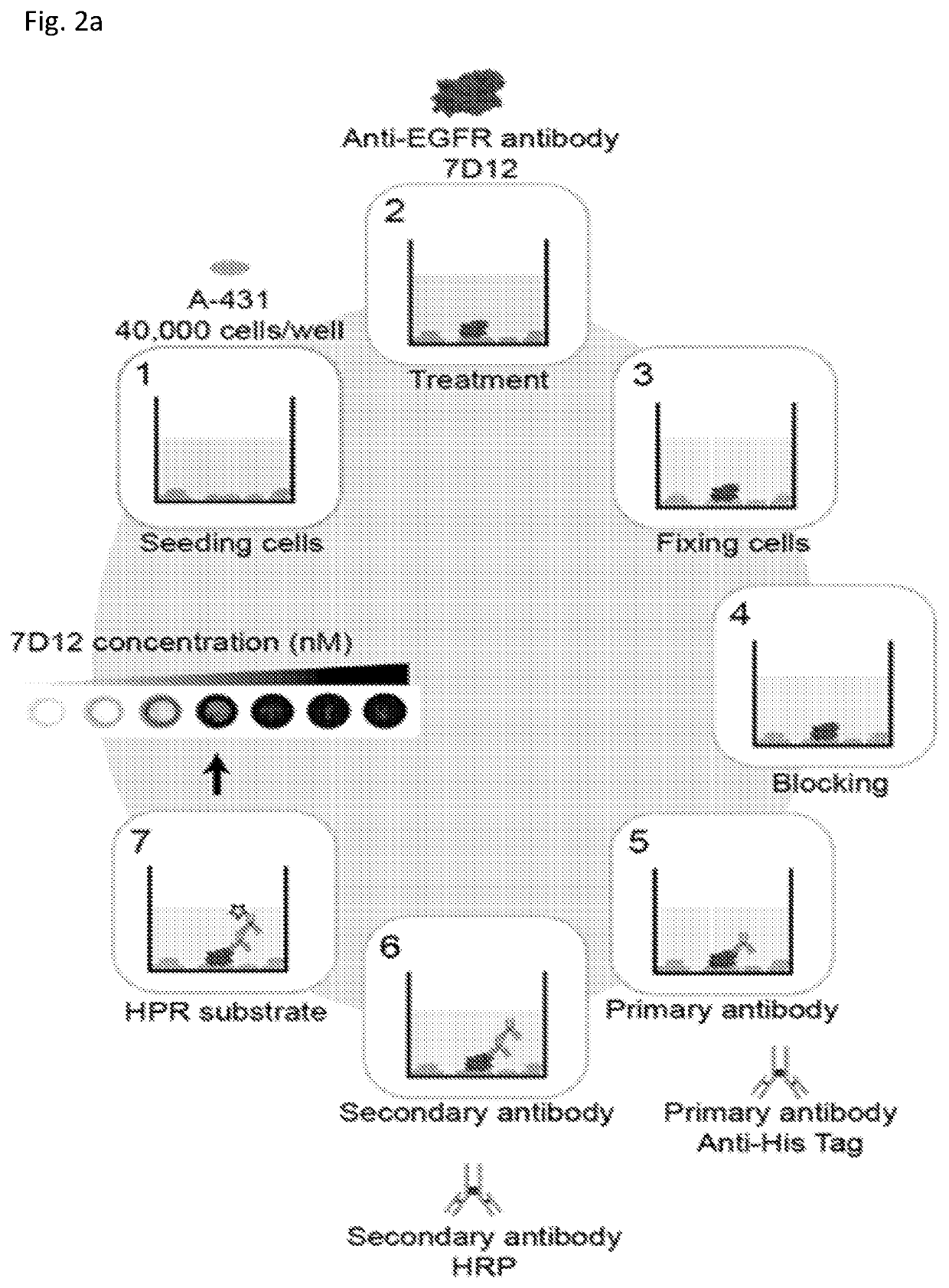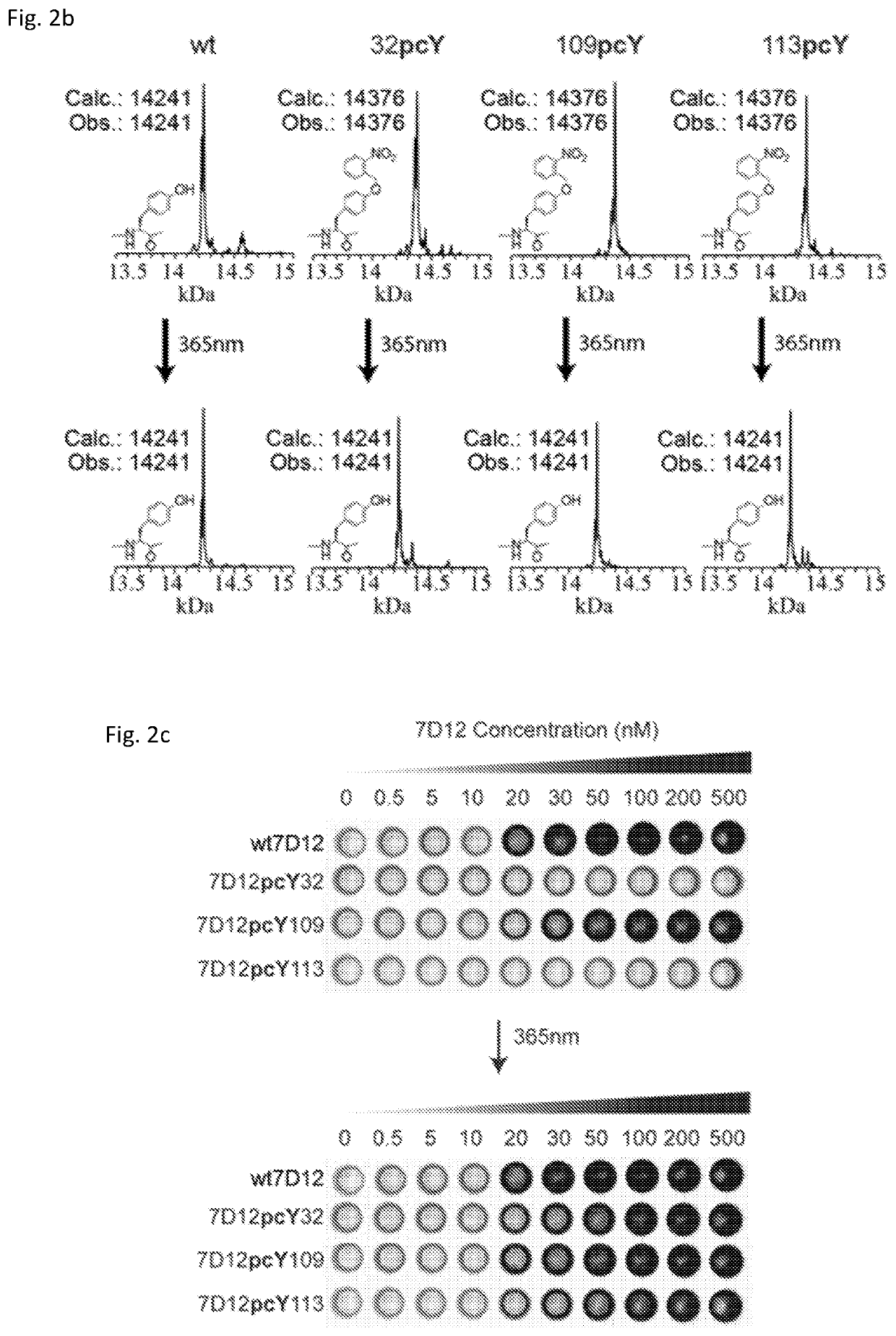Photoactive antibodies
a technology of photoactivation and antibodies, applied in the field of photoactivation antibodies, can solve the problems of drug selectiveness for particulars, severe side effects, drug ingredients, etc., and achieve the effect of preventing or reducing the binding of antibodies to their targ
- Summary
- Abstract
- Description
- Claims
- Application Information
AI Technical Summary
Benefits of technology
Problems solved by technology
Method used
Image
Examples
example 1
Genetic Site-Specific Incorporation of Photocaged Tyrosine into Antibody Fragments
[0158]Several suppressor plasmids have been employed in different studies for unnatural amino acid incorporation into proteins expressed in E. coli. These plasmids contain orthogonal aminoacyl-tRNA synthetase (aaRS) / tRNA pairs that incorporate unnatural amino acids in response to an amber stop codon or a quadruplet codon. The suppressor plasmids vary in their origin of replication, promotors that drive the expression of aaRS and tRNA, and the copy number of aaRS and tRNA gene. Hence, we screened five reported suppressor plasmids, with the aim of developing an optimized system for unnatural amino acid incorporation into antibody fragments.
[0159]First, wild-type 7D12 (wt7D12) was cloned into pSANG10 plasmid forming pSANG10_7D12 plasmid; pSANG10 has earlier been employed for efficient expression of single chain antibody fragments in the periplasm of E. coli (Martin, C. D.; Rojas, G.; Mitchell, J. N.; Vinc...
example 2
the Binding of Photocaged Antibodies to EGFR on the Surface of Cancer Cells
[0161]Several methods exist for measuring the interaction of proteins in solution, including enzyme-linked immunosorbent assay (ELISA), surface plasmon resonance (SPR), isothermal titration calorimetry (ITC) and dynamic light scattering (DLS). However, these methods often require purified proteins and measure the binding of biomolecules in non-cellular environments. Methods have also been developed to measure the binding of biomolecules on the cell surface using imaging SPR and on live cells using flow cytometry. These methods require and / or employ sophisticated instruments. Labelled proteins have also been used for studying biomolecular interaction. However, labelling of proteins with probes can often influence their interaction with the target.
[0162]In the present investigation, an easily accessible and economical approach was adopted to assess protein-protein binding by performing western blot on the cell ...
example 3
Dynamics Simulations Explain the Effect of Photocaged Tyrosine on the 7D12-EGFR Interaction
[0166]In the crystal structure of 7D12-EGFR domain III complex (PDB ID: 4KRL), Y32, Y109, and Y113 residues in 7D12 lie at the binding interface. Hence, in our experiments, we expected that substituting any of these tyrosine residues with pcY could inhibit or affect 7D12-EGFR binding. While two of the three mutants show expected behaviour, i.e., significantly reduced binding to EGFR, one of the mutants, 7D12pcY109, binds to EGFR with affinity comparable to wt7D12. We investigated this difference in binding behaviour through a description of 7D12-EGFR interactions and dynamics in the presence and absence of photocaging group, using MD simulations.
[0167]All-atom MD simulations were performed for four systems: complexes of EGFR domain III with wt7D12, 7D12pcY32, 7D12pcY109, and 7D12pcY113 in the presence of explicit water and ions. This is shown in FIG. 3A. The crystal structure for 7D12-EGFR dom...
PUM
| Property | Measurement | Unit |
|---|---|---|
| wavelength | aaaaa | aaaaa |
| molecular weight | aaaaa | aaaaa |
| flow rate | aaaaa | aaaaa |
Abstract
Description
Claims
Application Information
 Login to View More
Login to View More - R&D
- Intellectual Property
- Life Sciences
- Materials
- Tech Scout
- Unparalleled Data Quality
- Higher Quality Content
- 60% Fewer Hallucinations
Browse by: Latest US Patents, China's latest patents, Technical Efficacy Thesaurus, Application Domain, Technology Topic, Popular Technical Reports.
© 2025 PatSnap. All rights reserved.Legal|Privacy policy|Modern Slavery Act Transparency Statement|Sitemap|About US| Contact US: help@patsnap.com



